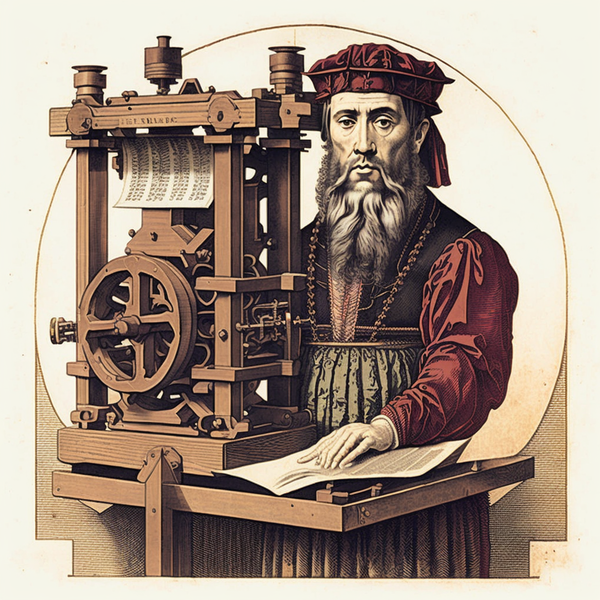The Printing Press

It would take more than 4,000 years to witness the next revolution in communication. During those millennia, humanity managed to make improvements to writing, to language, and to the media societies used to record their thoughts, but none of these changes amounted to a revolution until Johannes Gutenberg perfected his printing press in the 15th century. Gutenberg became interested in mass-producing writing, because at the time, the only way the non-royal “commoners” could get their hands on a Bible was to purchase them from monasteries at an astronomical price. Monks skilled in the art of calligraphy often took months, if not years, to produce a single edition of the Bible. As a result, few people had access to religious texts, so they had to rely on priests to read to them while attending religious services. Such imbalanced access to the governing religious text of the day presented the possibility for those in power to take advantage of the limited flow of information, and as a result, embellish or manipulate that information to suit their needs.
Gutenberg received credit for the invention of moveable type in Europe, which allowed him to print off about 180 copies of the Bible. Since paper was still not the most commonly used medium of the time, he made 45 copies using vellum, a parchment made from calfskin. It took roughly 170 calfskins to produce just one Gutenberg Bible, which means they needed to slaughter about 7,600 calves to produce the vellum needed!
Gutenberg’s invention suddenly made the most prominent religious text of Europe available to considerably wider audiences, and shortly thereafter, Martin Luther published his 95 Theses to kick off the Protestant Reformation, which split the Christian church into fragments. This began religious infighting that drastically changed Western civilization over the next three centuries.
Today, artists skilled in calligraphy do not hold a monopoly in the book-publishing world, and though they lost their status, the world gained huge benefits as the tools that would lead to mass communication grew in number and capability.

